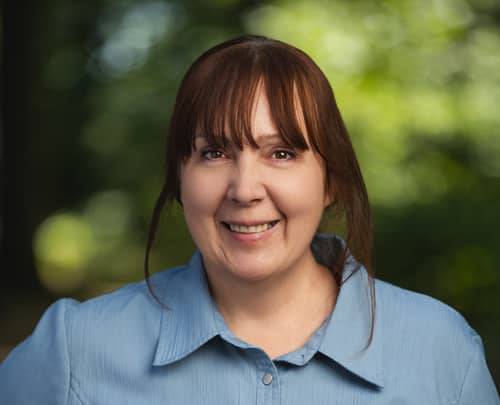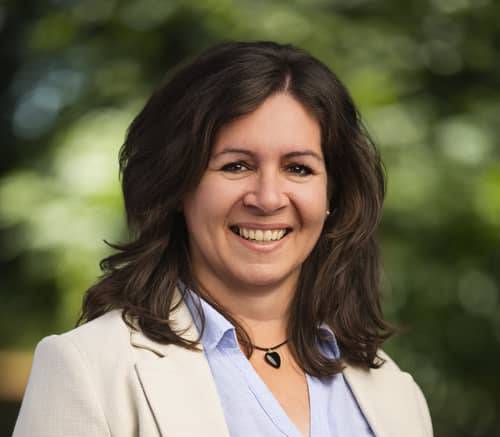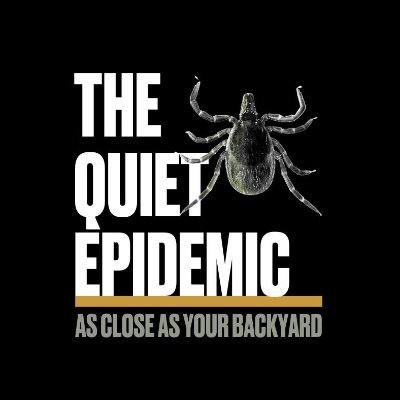2
Oct
2014
Lyme disease on Une pilule, une petite granule

The feature of the week on October 2, 2014, on the show Une pilule, une petite granule was entirely dedicated to Lyme disease. Here is the link to watch the report on the show’s website: Lyme Disease: Crossing the Border for Treatment.
Here is the text that accompanied the video report below.
Lyme disease is rapidly spreading in Quebec: between 2011 and 2013, the number of infected individuals increased from 38 to 141, which represents a significant rise. The experts we contacted believe that this number is likely well below the actual figure, as many cases go unreported due to the fact that it is an emerging disease—the tick responsible for transmitting the disease has only been present in Quebec for a few years.
If diagnosed in time, Lyme disease can be treated fairly easily with antibiotics. However, if the infected person is not treated, the disease spreads throughout the body and can affect the heart, nervous system, and joints. At this stage, the disease becomes difficult to eradicate, even with medical treatment. This is what leads some people to speak of a chronic form of Lyme disease. Currently, Quebecers dealing with this chronic form of the disease feel misunderstood by the medical system, which has very few solutions to offer them.
Discouraged by finding themselves with a medical condition that seems to have no solution, a growing number of Quebec patients are now turning to the United States, where some doctors claim to treat this chronic form of the disease with a cocktail of antibiotics. However, this approach is highly controversial within the medical community, as our team discovered during the filming of this report.
Mélanie Vachon is convinced that she contracted Lyme disease about ten years ago in the Laurentians. A veterinarian by training, she believes she was bitten by a tick while treating a dog. Within six months of that bite, she developed a wide range of symptoms. Some resembled restless leg syndrome, but she also suffered from neurological issues, arthritic pain, and suicidal thoughts. Her condition continued to worsen until she lost the use of her legs in 2013 and had to resign herself to using a wheelchair.
Despite the severity of her condition, Mélanie felt misunderstood by the Quebec medical system, as no one could identify the cause of her symptoms. “All they offered me was antidepressants,” she recalls. “And the day I realized, ‘Okay, I’m on my own and I have to take charge of my own care,’ was when I saw my internist write: ‘I doubt we will find any pathology in this patient.’ I was almost in a wheelchair at that point, my legs weren’t working well anymore, and neither were my arms. When I saw that, I thought, ‘Okay, that’s it, I’m completely on my own. There’s no one else here who can help me anymore.’”
At that point, and upon the recommendation of another person suffering from the same disease, Mélanie decided to seek treatment from Dr. Maureen McShane in the United States.
At her clinic in Plattsburgh, New York, Dr. McShane treats only patients with the so-called “chronic” form of Lyme disease. Surprisingly, 90% of her patients are Canadian, with a quarter of them coming from Quebec.
According to Dr. McShane, this situation is due to the fact that these patients are unable to get properly diagnosed and treated in Quebec: “Chronic Lyme disease is not treated in Quebec. Even the acute form is sometimes not recognized, which is why Quebecers seek treatment in the United States from doctors who acknowledge the chronic form of the disease.[Au Québec,] They don’t recognize that there is a constellation of different symptoms, leading to misdiagnoses of chronic fatigue, multiple sclerosis, or fibromyalgia, and resulting in inadequate treatments. They are better served in the U.S. because the disease is not recognized in their own country.”
Dr. Denis Phaneuf, a microbiologist and infectious disease specialist at Hôtel-Dieu, CHUM, acknowledges that Lyme disease is still not very well understood in the Quebec medical community. He explains this by noting that Lyme disease has only been present in the region for a few years and is not yet taught in medical schools. Although the Public Health Department has recently begun to officially address the issue, particularly in the Montérégie region, Quebec physicians are still not accustomed to recognizing the symptoms of this emerging disease.
A difficult diagnosis to establish
Lyme disease is so difficult to diagnose because it manifests through a variety of symptoms. Another challenge is that laboratory tests often fail to detect it in the weeks following infection, which is precisely when treatments are most effective.
Detecting the disease through laboratory tests is not easy in the later stages of the illness either, explains Dr. McShane: “The test results of the people who come to see me don’t necessarily indicate the presence of Lyme disease, but about 90% of these patients respond well to the treatment.”
For sick individuals like Mélanie Vachon, this situation is extremely difficult to bear, as it is impossible for them to get confirmation of their health condition. “From one day to the next, you lose control of your life,” Mélanie explains, “you lose control of your body. It doesn’t show up in any tests, and it doesn’t show when you talk about it either. The doctor can’t verify anything: everything appears normal, but you know that your body is in bad shape. And yet, even if you feel psychological symptoms, even if you feel like you’re losing your memory, you know that what you’re experiencing is real. But there’s no one to believe you. Not a single doctor believes you, because they can’t verify it. I can’t describe the anxiety it creates—it’s enough to drive you mad.”
“Honestly, it’s a nightmare,” she continues. “And that’s the worst part of the disease, by far. Even in the worst moments, when I was lying on my back on morphine, struggling to breathe and wanting to die, it was less painful than the anxiety I experience every time I leave a doctor’s office, even today.”
Controversial treatments
Fortunately, Mélanie was able to find support through the Quebec Lyme Disease Association, which advocates for better recognition of Lyme disease and the implementation of preventive measures. Within this group, one observation is unanimous: the Quebec medical community is not doing enough to prevent and treat Lyme disease. This is why many of the people our team met there have sought antibiotic treatments from American doctors.
For Dr. Phaneuf, however, it is far from clear that the treatments offered in the United States are both effective and safe for treating Lyme disease. He is particularly opposed to the fact that these treatments are administered over long periods, sometimes several months, which can pose a health risk to patients. “It’s possible that in a few years, we’ll have evidence that a two-month treatment works very well,” he acknowledges. “It’s possible, but we don’t have that proof yet, and we are far from having it.”
These treatments are not universally accepted across the border either, as Dr. McShane explains: “The problem is that doctors in the United States are divided into two camps. The Infectious Diseases Society of America (IDSA) claims that the disease is hard to contract, easy to cure, should be treated for only a short period, and that treatments should stop even if the patient still has symptoms. In the case of chronic Lyme disease, treatment would last a maximum of one month. According to the International Lyme and Associated Diseases Society (ILADS), of which I am a member, the disease is fairly easy to contract and difficult to cure.
Because the topic is controversial, major American medical journals do not publish articles on proven ways to cure the disease. Therefore, doctors who are not involved in the debate are unaware that treatments other than those commonly prescribed exist.”
A cocktail of antibiotics
It’s important to note that the cocktail of antibiotics offered to individuals with the chronic form of Lyme disease is particularly difficult for patients to follow. To manage all the products she has to take, Mélanie Vachon has equipped herself with two large pill organizers—one for antibiotics and the other for supplements. She also uses a timer to remind her when to take her medications.
As a veterinarian, Mélanie is very familiar with antibiotics, and she admits that she was initially surprised to be prescribed classes of antibiotics that are typically contraindicated when combined. However, in desperation, she decided to try the treatment, as no other therapeutic options were being offered to her.
Dr. McShane explains that, according to the recommendations of the International Lyme and Associated Diseases Society (ILADS), Lyme disease must be treated with multiple antibiotics to target not only the bacteria responsible for the disease but also other infections transmitted by the tick. This treatment should be continued until the patient has been symptom-free for 2 to 3 months.
One of the problems with this treatment is that, to reach this stage of recovery, patients who have had the disease for several years must take this cocktail of 4-5 antibiotics for a very long period, which can last up to 3 to 5 years.
Given the current state of knowledge, Dr. Phaneuf is adamant: this long-term antibiotic treatment is not supported by any valid scientific study. Even worse, it can cause serious health problems: “Of all the patients who have exceeded one month of treatment, I have never seen improvement after that time. The problem is that patients want the symptoms to disappear, but 8 times out of 10, even with the best treatment in the world, the symptoms will persist because the disease has reached a chronic stage and the damage is already done. The bacteria may disappear, but the symptoms will persist.”
It is also important to note that this type of treatment is very expensive. Mélanie Vachon and her partner have spent over $5,000 in just six months. To prepare for the costs in the coming years, they have remortgaged their home for $30,000.
The strategy to follow: treat as quickly as possible
At present, given the inability to better assist patients with the chronic form of the disease, Dr. Phaneuf recommends targeting effective treatment as early as possible. His goal is for doctors to be better equipped to quickly diagnose the disease without waiting for lab tests, which are bound to be negative in the first weeks following infection.
At the first stage of the disease, a 15-day course of antibiotics will be 98-99% effective, he says. At the second stage, within the following twelve months, the effectiveness remains very high, around 95%. However, it is clear that after this period, at the tertiary stage, the effectiveness of treatments drops to 20%. The neurological, arthritic, or cardiac sequelae caused by the disease are very likely to remain permanent, even if the infection itself is successfully eradicated.
“The damage that has been done is done,” he concludes. “That doesn’t mean we shouldn’t treat. But currently, I have no evidence that treating for more than 3 weeks, or treating for more than three months, provides any benefit. If the evidence comes, we will gladly accept it.”
For her part, Mélanie Vachon will continue relying on the treatment offered by Dr. McShane. While she admits she sometimes has doubts about the effectiveness of the treatment, she has decided to go all in and focus on healing.
A word from our hosts
Regarding these treatments offered by American doctors, it is important to highlight two things:
- These treatments are not recognized by the medical community and have been widely criticized, notably in the prestigious medical journal The Lancet.
- The community of American doctors administering this treatment is very diverse. Among them, there are not only well-intentioned individuals, but also those whose licenses have been suspended for malpractice.
Lyme Disease 101
- The disease is transmitted by a tick, whose territory is increasingly expanding in Quebec. It is now present in Montérégie, southwestern Mauricie and Centre-du-Québec, and northern Estrie.
- The most significant hotspot for Lyme disease transmission in Quebec is Mount St-Hilaire.
- To avoid tick bites while hiking in forests in high-risk areas, it is recommended to stay on the trails and avoid walking through areas of dense vegetation.
- This tick should not be considered the cause of the disease, but rather a vector: it transmits a bacterium called Borrelia, which causes Lyme disease.
- As a preventive measure, it is recommended to inspect your skin after a walk in the forest. And if you notice a tick, there is no need to panic: it must remain on its host for 3-5 days to transmit the disease. By removing it promptly, the risk of infection is eliminated.
- If you notice the development of a lesion after being bitten by a tick, quickly take a photo of the wound. This photograph will be very useful to the doctor in establishing a diagnosis during the acute phase of the disease, when laboratory tests are unable to detect the presence of the disease.



